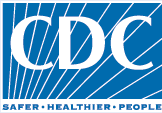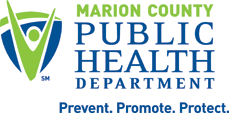Antibiotic Resistance
[an-ti-bahy-ot-ik ri-zis-tuh'ns]
The ability of bacteria and other microorganisms to adapt, mutate and resist an antibiotic that once had the ability to stall or kill them. Also called drug resistance.That’s all great ... but what does it mean?
Common illnesses we experience today were once, before antibiotics, deadly killers. Illnesses such as strep throat, ear infections, tuberculosis and pneumonia were frequently fatal before the widespread use of antibiotics. Alexander Fleming, a Scottish scientist, won the Nobel Prize for his accidental discovery in 1928 of a substance that could break down and kill bacteria. He called the substance penicillin, after the Pencillium mold from which it originated. By 1941, penicillin could be produced and purified in quantities large enough to treat bacterial infections in the general population. Drug companies began developing other kinds of antibiotics, and now doctors and nurses have a plethora of antibiotics to choose from.The problem of antibiotic resistance
Antibiotic resistance has been a concern since antibiotics were first used on a large scale. Scientists noted that some strains of bacteria could not be killed by penicillin. These bacterium were resistant. When an antibiotic is used, it kills bacteria susceptible to the antibiotic and can leave behind resistant strains of the bacteria. The resistant bacteria are then able to flourish because their competition has been eliminated. When this happens, antibiotics become less effective. Some antibiotic resistance is the result of bacteria producing and using antibiotics to fight off other bacteria. The process of natural selection leads to some resistance of antibiotic; however, the level of antibiotic resistance occurring today is due to overuse and abuse of antibiotics.How are antibiotics being abused?
Antibiotics are only effective against bacterial infections. Some illnesses, such as the common cold and the flu, are caused by viruses. When antibiotics are taken to treat a cold, they kill some bacteria but encourage other bacteria to develop resistance. That resistance is then passed on to other bacteria, and other people, making it harder to kill and requiring a different antibiotic. This common problem is called multi-drug resistance and occurs when multiple antibiotics are used to treat an infection, resulting in a stronger strain of bacteria that is resistant to many different antibiotics. The growing problem of antibiotic resistance means consumers need to be aware of what illnesses are actually caused by bacteria and when it is appropriate to request antibiotics. The Mayo Clinic lists common bacterial and viral infections:Bacterial infections
- Some ear infections
- Severe sinus infections
- Strep throat
- Urinary tract infections
- Many wound and skin infections
- Most ear infections
- Colds
- Influenza (flu)
- Most coughs
- Most sore throats
- Bronchitis
- Stomach flu (viral gastroenteritis)
Consequences
Antibiotic resistance means bacterial infections are harder and more expensive to treat. For example, drug-resistant tuberculosis (TB) is much more expensive to treat than nonresistant TB and can require two years of treatment to cure. Developing antibiotics for resistant bacteria is an expensive business, and that expense is passed on to the consumer. Because resistant bacterial infections are harder to treat, a person may be sick longer and incur large medical expenses. Longer recovery times also means more days off sick from work or school. Personal misuse of antibiotics not only affects you as an individual but contributes to the global problem. Nearly all common types of bacteria throughout the world are becoming resistant to commonly used antibiotics. Every time you take antibiotics when they aren’t needed or don’t complete a course of antibiotics, you help to create bacteria that are drug-resistant and spread from person to person, country to country.What you can do
Antibiotic resistance is everyone’s problem. Here are some things you can do to promote the appropriate use of antibiotics.- Don’t demand antibiotics from your doctor for a viral infection. Antibiotics only combat bacterial infections.
- Finish your course of antibiotics completely. Do not stop taking them if you start to feel better. This will eliminate the most vulnerable bacteria and leave the more resistant bacteria in your system.
- Only take antibiotics that are prescribed to you. Taking antibiotics you were not prescribed can have adverse effects and may not treat the root problem of your illness.
- Keep a record of antibiotics you have been prescribed, including the names and dosages, so your doctor can better evaluate which antibiotics are best for you.



